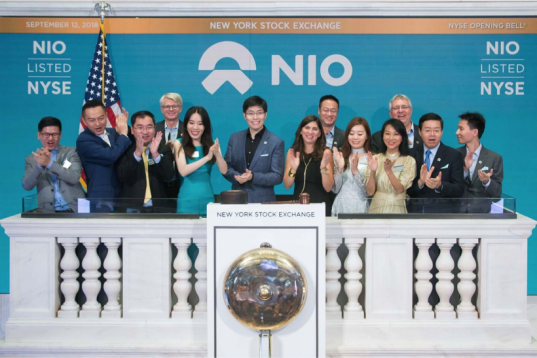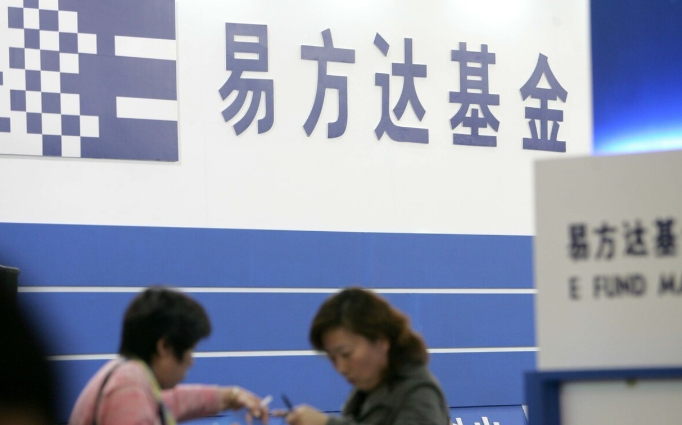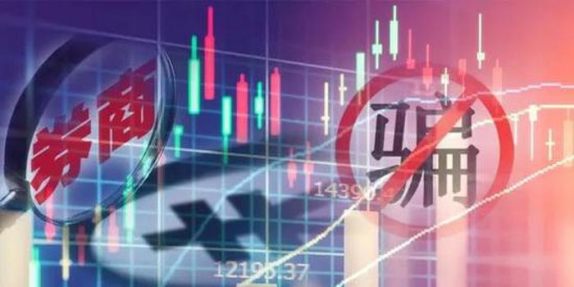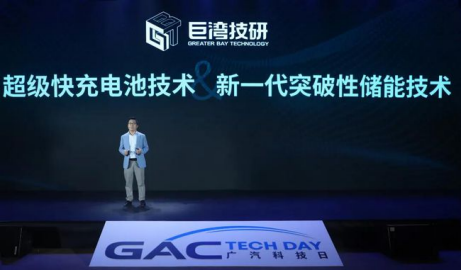This article is reproduced from autocarweekly public account.
Author: Financial Street Old Li
The management of market value by automobile enterprises has never exceeded expectations, only “speculating expectations”.
Market value management is a new term for friends in the automobile industry. Without Tesla’s second primary curve last year, without the market value explosion of the three new forces at the end of the year, many friends might not have paid attention to the company’s market value. For those who work in the automotive industry, market value management should become a necessary skill for automotive industry management and marketing from 2020. The reason is simple. The essence of the games between China and foreign fields is financial games. It is essential to make China strong by making companies strong and making finance strong.
Automobile companies can only continuously raise funds, maintain the company’s market attention and core competitiveness, and ensure their healthy development by doing well in the fundamentals and increasing their market value. According to Old Li, some state-owned enterprises have already listed market value management as a KPI for their company’s high-level executives. Car companies not only need to To C (customer-User), but also To C (capital-Capital).
Today, Old Li will discuss with you how the company’s market value changes, how the capital market studies the company, and how the company’s managers and marketers manage market value.
Understanding changes in market value helps to learn how to buy stocks
Market value management is not a term created by Old Li, nor an industry convention, but an academic term, just like CAE (computer-aided engineering) and other professional terms in the automotive industry. Market value management is an academic term in the financial industry. Different experts and different books have different explanations for market value management. Generally speaking, market value management is a strategic management behavior of listed companies to achieve the satisfaction of shareholder requirements of corporate performance and stock prices through compliant methods and means.
There are two key words here, one is performance, and the other is stock price. In the past, the automotive industry only looked at performance and did not look at stock prices, because stock prices were not included in the KPI assessment. Now it’s different: for company managers, only performance without stock prices is a failure, and only stock prices without performance is even more of a failure.

Recently, Old Li and everyone have discussed that the management ability of market value by high-level executives of domestic automobile companies is still far behind, although A shares have been in a structural bull market for the past two years, and the automotive industry is also a golden track. Due to the significant differences in market value management ability among different car companies, there have been divergences between the valuations and performance of many automotive companies. Some listed companies shine under the industry spotlight, raise funds easily, and their stock prices double; some listed companies’ stock prices fall instead of rising, raising funds is difficult, and no one pays attention.# About Market Value Management
There are many theoretical methods on market value management in books, but they are not practical. If we use the book’s explanation as an investment reference, it’s definitely confusing. Just like the automobile industry has its own development rules and operation methods, market value management also has its own operation methods. Let’s talk about one of the guiding stars of market value management with everyone – how stock prices change.
Overall, the more funds bought on the secondary market, the higher the company’s stock price will rise, and the less funds bought on the secondary market, the lower the company’s stock price will fall. Generally, the funds in the secondary market are roughly divided into the following categories: Northbound funds, mainland public funds, mainland private funds, high-net-worth investors, and small retail investors. The first two can affect the stock price in the medium and long term (1-3 months), while the first four can affect the stock price in the short term (3 trading days).
Among Northbound funds and mainland public funds, Northbound funds are praised as the “smartest funds” because they are foreign funds, and domestic sellers cannot influence their decisions. Public funds can be influenced by analysts. These are the funds we purchase on platforms such as Alipay. The size of these funds is very large, with tens of billions or even hundreds of billions of yuan in market capitalization. Their buying and selling can affect the rise and fall of the underlying assets in the medium and long term. Last year, more than 30 domestic public funds bought Great Wall Motors, and naturally its stock price soared.
So, how to make public funds buy your company’s shares? This is how the secondary market generally operates: the researcher of the sell-side (brokerage research institute) researches the listed company, recommends the stock to the researcher or fund manager of the buy-side (such as public funds), and the buy-side researcher or fund manager decides the trade strategy based on the sell-side information and personal thinking. Then, buy-side trader buys it. The more buy-side buys, the higher the stock price rises.
Compared to buy-side researchers and fund managers who need to cover 30-50 stocks, sell-side researchers have deeper understanding of industry and enterprise. As mentioned earlier, market value management is based on both performance and stock price. Therefore, for auto companies, after ensuring performance, successfully persuading brokerage researchers is half the battle. If you can persuade buy-side researchers and fund managers, then the job is done.
In my opinion, the logic of the stock market is the same as that in the workplace: in a company, being able to do the job is the foundation, but you need to learn how to deal with people to get your leader’s recognition. In the stock market, company performance is the foundation, but learning to tell stories is also important to gain favor in the secondary market.## What kind of car companies does the capital market like?
In the previous article, Mr. Li mentioned the transmission method of market value: car companies -> secondary sellers -> secondary buyers -> stock prices.
In this chain, the interests of the secondary buyers and sellers are consistent with those of the car companies: they hope that the automotive industry will always maintain a high level of popularity, so that both parties can obtain greater investment returns and dividends; the automotive companies also hope that the industry will maintain a good development trend and achieve more performance.

Understanding the transmission method of market value, we can understand that the car companies themselves are the ones who can really influence the stock prices of car companies. Mr. Li quotes a paragraph from Xun Yugen, a well-known strategy analyst in the secondary market, to describe this:
“Car companies are like Japanese cuckoos. If a cuckoo does not sing, what can you do? Oda Nobunaga said, ‘I can make it sing.’ This is a sitting-on-the-bank model, which believes that it can control the market according to its own will. This era has passed. Toyotomi Hideyoshi said, ‘I can induce it to sing.’ This is a deception model, which believes that it can induce the market. This model has also passed. Finally, Tokugawa Ieyasu said, ‘I wait for it to sing.’ This is our choice. As long as it is a healthy cuckoo, it will sing.”
In the past, analysts followed the methods of Oda Nobunaga and Toyotomi Hideyoshi, but now researchers follow the method of Tokugawa Ieyasu. Researchers hope that car companies can tell a good story themselves, and they can act as transmitters and amplifiers, influence buyers, and then enhance stock prices. However, most car companies cannot grasp the thoughts of institutional analysts.

To put it simply, only when car companies want to speak out and can speak out, can researchers discover and help them. Currently, the biggest problem for most automobile companies is that they have good performance but cannot effectively communicate. Mr. Li gives an example of a state-owned automobile company that recently tried to increase its valuation: the company chose battery technology as a breakthrough point, and before the battery technology PR event, asked financial media to help publish articles, hoping to attract attention in the secondary market and thus drive up stock prices.

This is not a smart approach. Mr. Li has always believed that there is no one smarter than fund managers in this world. After all, Tsinghua University and Fudan University are the lowest thresholds for entering the industry. Many fund managers have long seen through the company’s ideas and taken advantage of them. The thinking logic of fund managers is as follows:From the overall perspective, they are not optimistic about this new battery technology concept and do not think that it will be produced on a large scale in the short term. Therefore, it is not a broad track. Since the enterprise is vigorously promoting it, retail investors will come in the next day. Fund managers will take advantage of the opportunity to do short-term trading. They will hang up the stop loss order and sell it the next day to earn a small profit. The stock price of this enterprise cannot achieve a phased increase.
In terms of storytelling, Great Wall is smarter. Mr. Wei has always been a practical person, but now he has learned marketing. Great Wall is good at speaking, and the fundamentals are the basis of speaking. In 2020, the performance of Great Wall Motors slowly recovered, and the story followed. The secondary market firmly believes that the big single product and new four modernizations have prospects.
Great Wall keenly seized this premise, first promoted the concept of Hafer H6’s big single product, and then launched a new four modernization marketing: for electrification, it promoted honeycomb energy and hydrogen fuel cells; for intelligence, it promoted Haomo Zhihang and Xiandou Smart; for networking, it promoted the digitalization center. The capital market believes that this is perfect and it is a good company on a good track. Many brokerage research analysts promote Great Wall everywhere, and many buyers are obsessed with it.
The valuation in the secondary market does not represent the true value of the company. Generally speaking, the stock price without performance support is just a bubble. Once it is exposed, the bigger the bubble, the fiercer the collapse, such as some speculative stocks like Rendong Holdings some time ago. There is no bubble for the stock price supported by performance. There are no stocks in the capital market that only rise and not fall. The overvalued stock price will also slowly fall back to a relatively reasonable valuation level, but the overall trend must be upward.
How do car companies manage their market value?
Managing market value for car companies is a new topic and there is no fixed answer. In the era where capital is king and holding together is king in the last two years, many listed companies have established market value management teams to help companies provide solutions and strategies to improve their stock prices. Some of Mr. Li’s friends have also participated, some in the environmental protection industry, some in the manufacturing industry, and some in the technology industry. Mr. Li often learns from them and shares with you some of the consensus on how car companies manage their market value.
Firstly, the market value management of listed companies is always carried out from top to bottom based on values. The management of market value must first be based on time dimension, which is not to achieve from 0 to 1 in the short term, but to make friends with time, at least for more than six months. During this period, the company’s top management should lay out from two aspects: value and marketing, with value corresponding to performance and marketing corresponding to stock price.In terms of value creation, the top management should form a comprehensive thinking framework for market value management, and realize value creation from internal operations, corporate governance, investment and mergers and acquisitions, industrial layout, and fulfilling social responsibility. This forms systemic guidance for actual operations in market value management, and establishes the overall business of the company in terms of value, as well as core teams in marketing.
Secondly, the core team should have a deep understanding of the means of market value management.
The top management is the helmsman of market value management, and the investor relations department and public relations department are the ones leading the charge. The investor relations department is mainly responsible for managing relationships with buyers and sellers, while public relations is responsible for packaging and communication, making it understandable and attractive to buyers and sellers.
This organizational relationship may seem simple, but it is difficult to operate. In order to be seen by the secondary market, the company’s management, investor relations, and public relations must all follow a mainline: Deeply understand the industry and the company. In reality, the management can achieve a deep understanding, but investor relations and public relations may not be able to achieve a deep understanding of the industry and the company, and thus are unable to achieve the goal of misleading the secondary market’s researchers through the packaging of the industry and the company.
This may sound abstract and empty, but market value management and sales management are very similar. The following example, provided by Mr. Li, the CEO of a domestic automobile company, can help explain how to implement the above two consensuses and drive up stock prices.
First, set the market value management target. The goal is not randomly set, but is determined by the company’s market value management team, who combine the internal and external financial market environment to set the target and submit it to the top management. This is similar to a car company’s sales company setting annual sales targets and submitting them to the top management. When the external financial and automobile racing environments are favorable, the company must capitalize on the opportunities presented. When the external environment is poor, the company must avoid falling behind.
Develop a clear market value management strategy. Car companies have sales management strategies, such as annual sales and marketing strategies, but in general, there are no annual market value management or marketing strategies, as they are not generally developed by PR companies. In the short term, market value management can be solved through capital means, such as repurchasing, increasing holdings, and increasing cash dividend ratios, to enhance market confidence and investor holding stability. For medium and long-term market value management, focus on the overall company strategy, seize new opportunities, and show the market that the company is not just an automobile company, but also a smart electric vehicle company, an energy company, and a technology company.Many automotive companies have proposed to transform into technology companies, but the capital market is not buying it. The main reason is that the capital does not believe that the automotive companies have the strength of technology companies. The best way to impress capital is through open strategic cooperation and joint ventures. For example, the reason why Xiaokang Stock has soared is that some researchers believe that after Huawei enters Xiaokang, Xiaokang Stock will become an automotive technology company. In the researchers’ view, capital cooperation is much more grounded than strategic cooperation.
Proactively Delivering Company Value. The company’s market value management strategy needs to be delivered to the market, mainly referring to the secondary market. Currently, automotive companies are not doing well in delivering value and do not engage with the secondary market. Some automakers attempt to use media channels to launch financial media to make a statement in the secondary market. Honestly speaking, this is not a good delivery method.
Li’s researcher friends hardly pay attention to automotive industry news that is released by financial media. It is widely known that financial media is not professional, and it’s easy to understand that an excellent finance graduate will first choose to be a buyer/seller instead of working in the financial media. In fact, everyone is most concerned about industrial media and industry experts. Through these two channels, they can often obtain more intuitive information. Industrial media refers to the core information released by professional commentators in the industry, while industry experts refer to researchers who continuously obtain company information through paid channels. Automakers can utilize these two channels.

Focus on Company Financial Details. The management method mentioned above is top-down from a macroscopic level to design the company’s industrial direction and capital operation. However, in the process of conducting on-the-ground research, investors will pay attention to detailed information and data such as company risk issues and production operations. Therefore, the company’s managers need to coordinate with the finance department to emphasize the improvement of the company’s governance and operation quality in the market value management process and communicate with the market in a timely manner.
Looking back over the past two years, Great Wall Motors has been thriving in the secondary market, while Geely, Guangqi, and other companies have increased by less than expected. Looking at the top management of domestic automakers, Li Bin, He XPeng, Wang Chuanfu, and Wei Jianjun are among the few people who have strong market value management capabilities.
Overall, performance is the foundation of market value management. How to package performance is an art. In the past few years, the automaker who captured the ToC (customer) marketing could have achieved success in both sales and brand awareness. Similarly, automakers who seize ToC (capital) marketing can achieve success in the secondary market.
This article is a translation by ChatGPT of a Chinese report from 42HOW. If you have any questions about it, please email bd@42how.com.